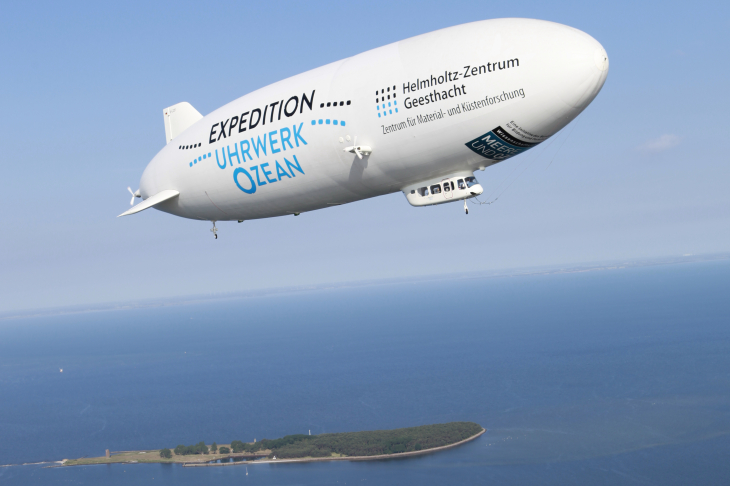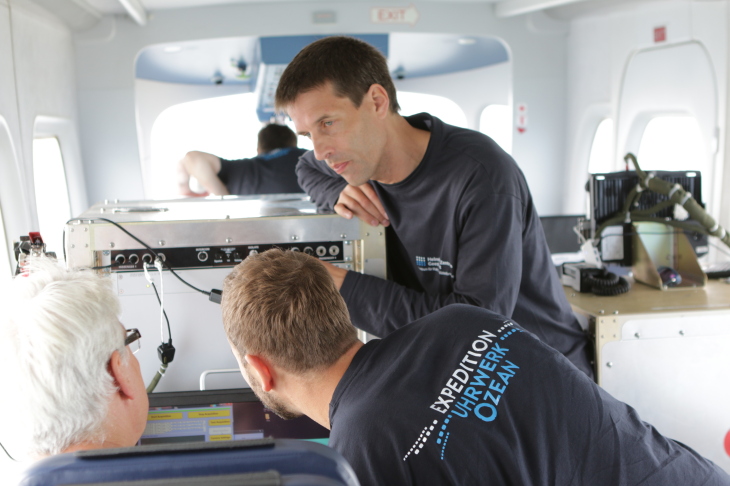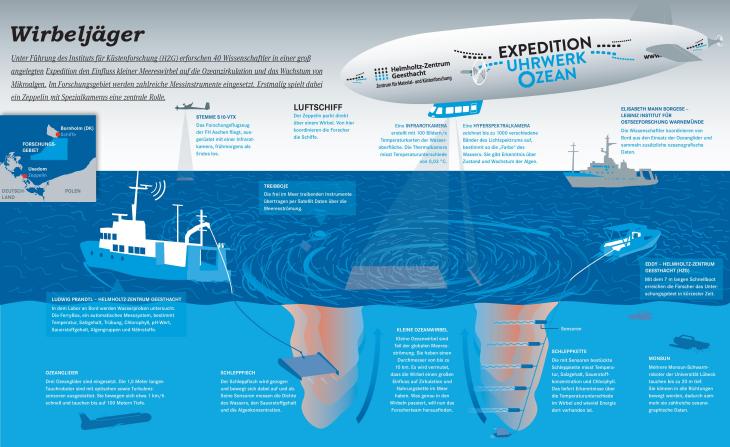Expedition “Clockwork Ocean”

The HZG is utilising a zeppelin for marine and coastal research in June 2016, marking the first time in history a zeppelin will be employed for such studies. It is equipped with special cameras and will detect small ocean eddies in the Baltic Sea. The scientists can “park” the zeppelin directly above the eddies, never losing sight of them.
Special cameras are employed for investigating eddies from the air. These cameras can measure temperature variations of approximately 0.03 degrees Celsius and can determine the colour spectrum of the seawater. Using these observations, scientists can establish how the cold internal core of the eddy mixes with the warmer outer portion of the water and how algae react to such mixing.

Drifters are deployed on the water’s surface to determine the current. The current measurements are completed by means of scientific ship radar systems. An Acoustic Doppler Current Profiler (ADCP) is used for currents beneath the sea surface. Similar to how a radar measures a car’s velocity, the ADCP measures movement of the water by means of sound.
A towed instrument chain has recently been developed. The researchers can, for the first time, pull up to twenty sensors through the water simultaneously at high speeds with this chain. It reaches a depth of fifty metres below the surface. The towed instrument chain can determine the eddy’s energy much more precisely than can conventional measurement methods. The Ludwig Prandtl, the Eddy and the Elisabeth Mann Borgese research vessels also help provide more precise insight into the eddy. The ships are supported by drifters, gliders and mini-robots that independently measure the eddies.
Info Graphic
